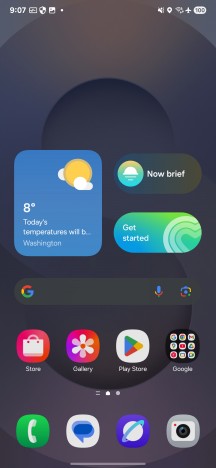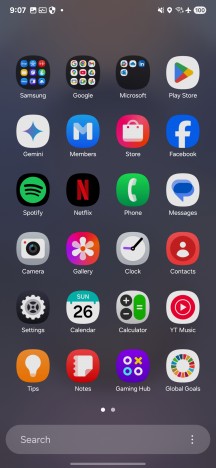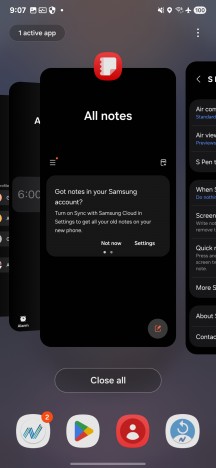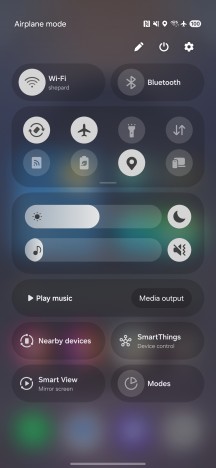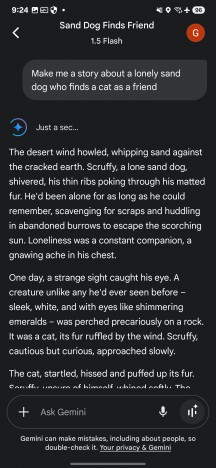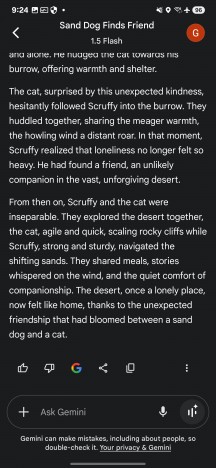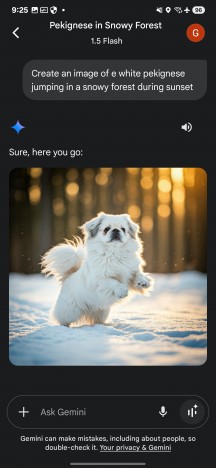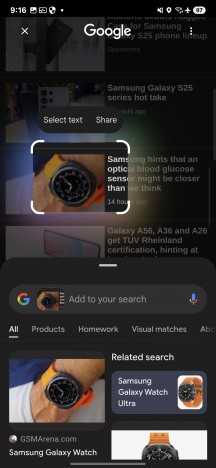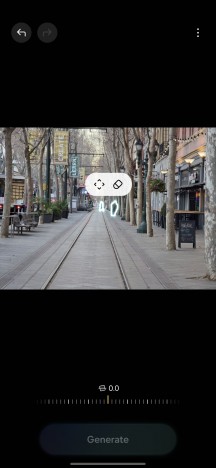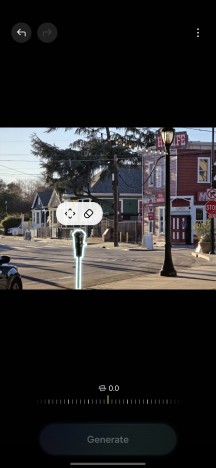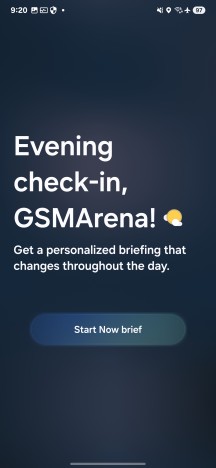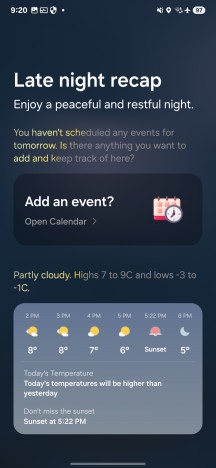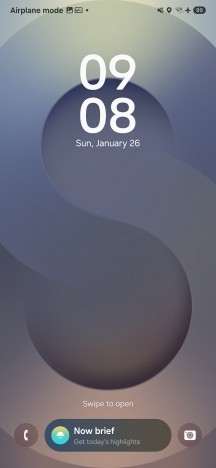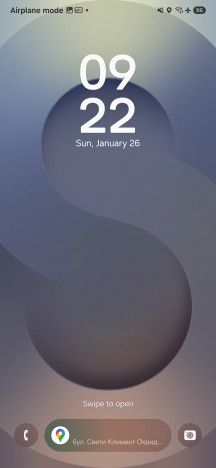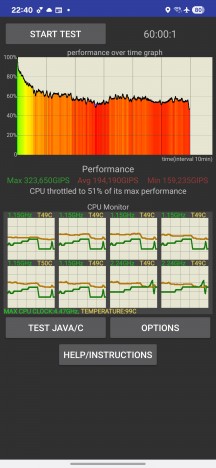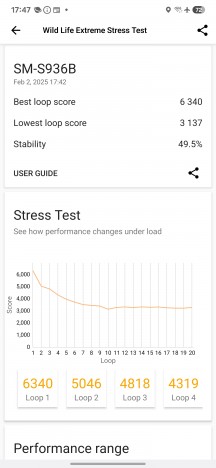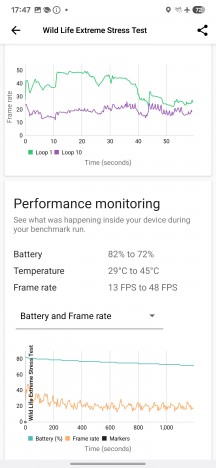Samsung Galaxy S25+ review

Android 15 plus One UI 7
The Galaxy S25+ boots Android 15 with One UI 7. Samsung promises seven years of software support that includes both major Android updates and security patches.
Here's our One UI 7 review in mobile view format - watch it on your phone:
One UI 7 looks a lot like One UI 6 with its signature icons, widgets and wallpapers. The operational logic hasn't changed much - you still rely on your homescreens, app drawer, gestures or button navigation, and the drop-down area.
One UI 7 has split the notification and quick toggles into two separate panes, like on the iPhones. Now you drop the notification page from the top left corner of the screen, and the expanded quick toggles page from the right corner of the screen. That said, you still get the option to revert to a common interface showing both your quick settings and notifications.
Samsung provides a few custom apps like Gallery, My Files, Internet, Health, Calculator, Calendar, Wallet, the powerful Notes app, and its own Bixby assistant.
The entire Google suite is also pre-installed, plus a few Microsoft apps - Office, OneDrive, Outlook, LinkedIn.
Google Gemini is at the heart of AI, as usual. You can ask Gemini a lot of stuff to do, even make entire conversations with the Live feature.
Perhaps the most significant new addition is system-wide support for natural language input, enabling features like AI Agents, AI Summary, additional Circle to search functionality, Gallery control and Cross-app Actions.
AI Summarize is a cool feature - the AI can analyze the screen's content in more detail and offer a short summary of the page.
Google recently updated Circle to search, so now it analyzes not just the screen contents as an image but can also listen to the audio that's currently playing and ID the music track.
The natural language input allows you to control your phone in various ways. For instance, you can voice search your Gallery and ask the AI assistant to pull out photos from your trip to a particular place.
You can even go to Settings and ask it to enlarge the font if it's too small, although this is limited to system menus only.
The Cross-app Action is arguably the most exciting feature. You can ask the AI to fetch information online and store it in Notes or create a Calendar event with the info. Or even send it as a message to one of your contacts. And you can do all of that with a single prompt.
This is quite impressive as the system is now seemingly capable of more complex tasks involving changing system settings and interacting with multiple apps, and all of that works with natural language input.
For now, the feature is available only with Samsung One UI system apps and Google apps, but Samsung promises to introduce support for third-party apps, including WhatsApp and Spotify to name a few.
The Gallery Generative Edit is quite powerful - it can add or remove people and objects, with their shadows, of course. It also allows you to sketch some things and add them to your photo.
Some personalized AI features are also at hand, such as Now Brief and Now Bar. Now Brief offers a summary of your daily schedule - for example, in the morning, it will summarize your last night's sleep, give you a quick brief look at your daily appointments and even let you know whether your favorite podcasters or artists have released new content. It will also come up at noon and in the evening to help you stay on top of things.
The Now Bar has a similar concept, except that it lives on your lockscreen and focuses on current apps and events. It will provide contextual information like what song you are playing, turn-by-turn directions from Google Maps with a suggested departure time so you are not late for your meeting, and even keep up to date with live score updates on your favorite sports team.
Samsung's DeX functionality is still part of One UI 7. You can connect a monitor, wired or wirelessly, to your Galaxy, and expand its Android capabilities in a desktop-like interface with windows and everything. The PC support for DeX is gone now, and Samsung suggests the Galaxy users should use the updated Link to Windows app by Microsoft instead. The app offers the same features as the PC DeX, for seamless PC-to-phone and vice versa transfers.
The Galaxy S25 software feels new and refreshing in a tangible way. However, most of that comes thanks to the visual overhaul that One UI 7 brings and this one is bound to trickle down to the Galaxy S24 as well. The all-important animation snappiness and fluidity are at a level above the others, and the interface looks very good.
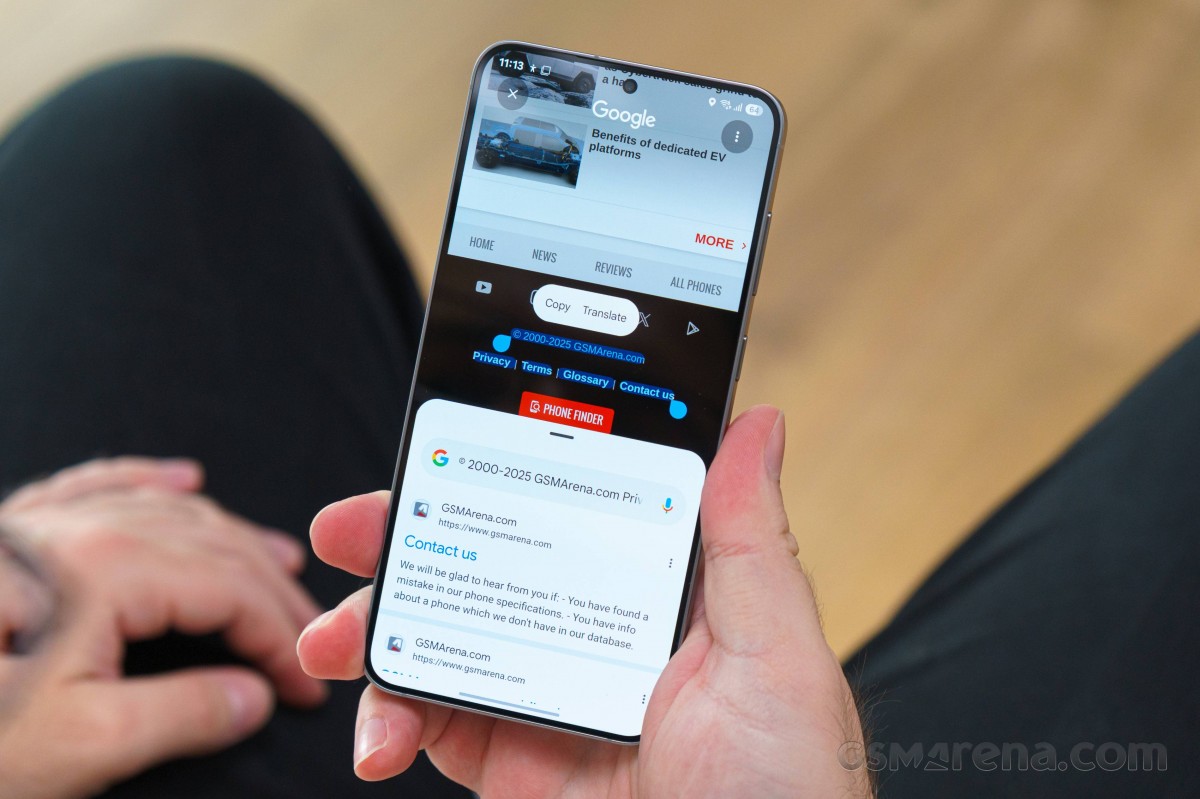
There are subtle new UI sounds that give the software a physical presence. Samsung took its time with this release and it shows. We're still kind of sour that the vertically scrolling app drawer didn't happen. At this point, only Samsung phones lack the feature.
Performance and benchmarks
The Galaxy S25+ is powered by the 3nm Snapdragon 8 Elite chipset, the most powerful SoC any Android phone can enjoy right now. It's a "Snapdragon 8 Elite for Galaxy", meaning the two prime CPU cores are clocked higher (4.47 GHz vs. 4.32 GHz), and the Adreno GPU runs at higher clock speeds.
The Elite chip uses Oryon processor cores, two versions of them - two Prime cores and six Performance cores. These aren't Cortex cores like in MediaTek and Samsung Exynos chipsets, but a custom Qualcomm design. The two Prime cores run at up to 4.47GHz, while the Performance cores are clocked at 3.53GHz.
Then there's the Adreno 830, which is built on a new architecture using a sliced design with dedicated memory for each slice. The 830 has three of these slices clocked at up to 1.2GHz.
The Galaxy S25+ is available with 256GB (as reviewed) and 512GB UFS 4.0 storage, while the RAM is always the same - 12GB LPDDR5X.
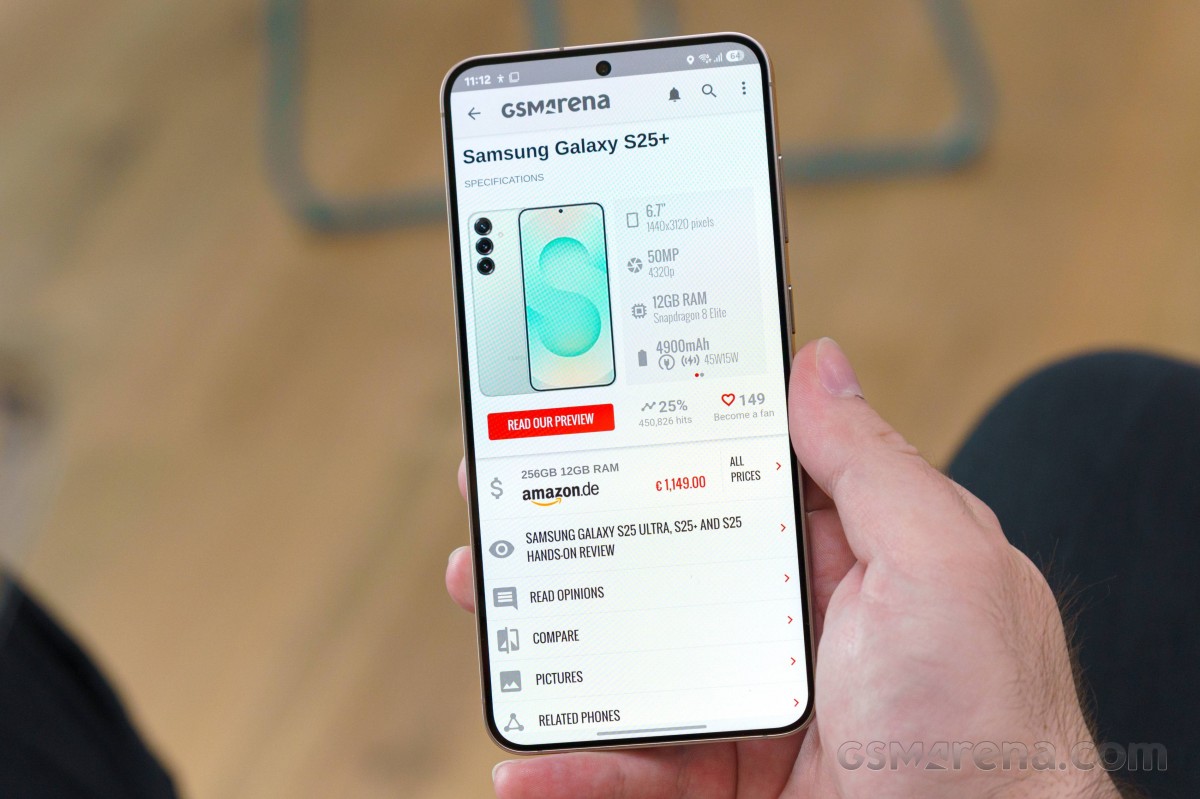
The Galaxy S25+ scores chart-topping results across the board. The Elite processor is the fastest Android CPU to date, scoring at least 30% higher than the Snapdragon 8 Gen 3, and between 20% and 30% more than the Dimensity 9300 and Dimensity 9400 CPUs.
The Adreno 830 inside the Snapdragon 8 Elite is also the best scoring GPU on the Android market right now. It is 30% more powerful than the Adreno 750 inside the Snapdragon 8 Gen 3, and about 10% better than the Immortalis-G925 inside the Dimensity 9400 chip.
The AI performance of the Elite chip is currently unmatched as well.
The Galaxy S25+ and its boosted Snapdragon 8 Elite demonstrate excellent performance capabilities by delivering chart-topping results in our CPU and GPU tests, even though the Antutu result doesn't exactly excite.
The sustained performance is similar to the previous generation of Galaxies - there is 41% CPU and 52% GPU performance drop. The phone gets warm under continuous stress testing, but never hot.
The Galaxy S25 may have the best Android chipset, but the sustained performance isn't ideal - the situation is similar to a few other flagships, but it seems to be a little worse here.
Connectivity
The Galaxy S25 and 25+ are dual-SIM 5G devices. They can do concurrent SA and NSA Sub-6 on two SIM cards. Depending on the market, you probably won't get to choose your actual physical SIM configuration. Most regions seem to get two physical Nano-SIM slots and an option to attach an eSIM card through software.
The S25 and S25+ still lack satellite connectivity as far as most practical purposes are concerned. There is technically some support. You can read more about it here.
There is no microSD card slot on the SIM tray.
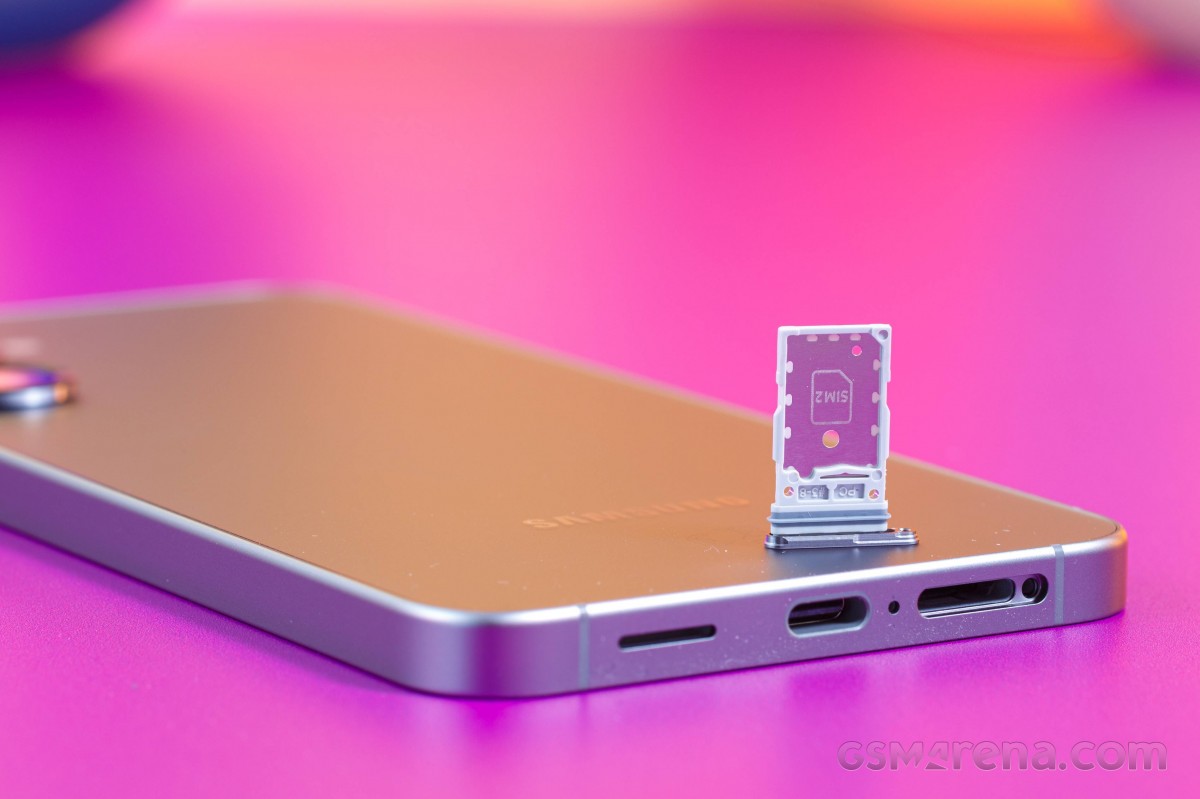
For local connectivity, the S25 and S25+ finally get Wi-Fi 7. It is a tri-band Wi-Fi 7 as well, which means you get to benefit from the fresh new 6GHz band.
Bluetooth is version 5.4 with LE support. You get NFC on board, but there is no FM radio or IR blaster.
We also tested the capabilities of the USB ports on the phones. Both the S25 and S25+ have Host/OTG support. Also, both of their ports offer Display Port 1.2 over USB Alt mode. Regarding data transfer, the Type-C ports are backed up by a USB 3.2 Gen 1 connection, which tops out at 5 Gbps transfer speeds - not too shabby at all for a smartphone.
The Samsung Galaxy S25 and S25+ have a pretty long list of on-board sensors. There is an STM LSM6DS accelerometer and gyroscope combo, an amsAG TMD4914 light sensor, an AK0991x_0 magnetometer and compass, and a BOSCH BMP5 barometer.
The proximity sensor situation hasn't changed since last year and is still a bit disappointing. You still get a virtual proximity sensor - Samsung Palm Proximity Sensor V2. It works quite reliably to turn off the display while in calls. Technically, there does seem to be an actual hardware proximity sensor inside the phone, but it appears to be inaccessible to any third-party app. The dialer has access to the sensor, but that's about it. These Samsung proximity oddities aren't new, however, and seem to date back at least to the S23 generation, where every phone, including the Ultra, is equipped with the same Samsung Palm Proximity Sensor V2 sensor tech.
Reader comments
- MicHat
- 01 May 2025
- 7tj
I don't understand the rating this phone has been given. The camera senses are substandard. Gsmarena has given the Moto Edge 50 Pro a 4.1 rating and it is a good all-rounder with AF on both its wide angle and telephoto lenses. Phones...
- CaptZug
- 23 Apr 2025
- IKJ
What the heck has happened to Voice-to-text technology?!? It absolutely Sucks! I have the S25+ I tried to say Pina colada. It gave me "Pinnacle Dogs" ?? That's not even close! I tried again, speaking very clearly. This time it gave ...
